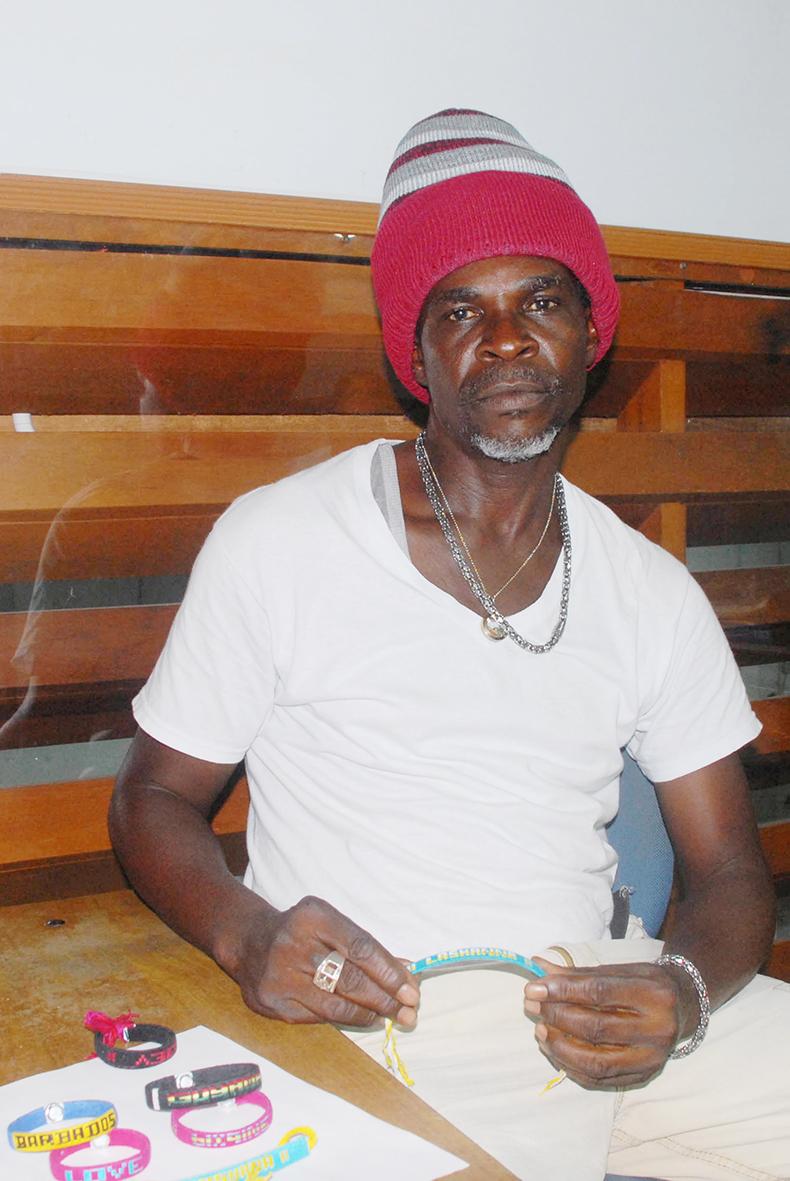At fifty-three, work and family having long been at the very centre of his existence, Lancelot McPherson says that the time is long overdue for a frank, open and decidedly public conversation on the local craft industry if it is ever to come even remotely close to fulfilling its potential as much as a viable sector of the country’s economy as well as a vehicle for satisfying both the economic and the creative cravings of the nation’s huge army of largely talented craftspeople. He believes that the failure to have such a public discourse so far has everything to do with an entrenched tendency on the part of Guyanese for simply ‘grinning and bearing it’ in just about every sphere of our lives. We have simply not learnt from our various experiences, he contends, that suffering in silence invariably accomplishes nothing.
The tragedy, he believes, reposes in the fact that what Guyana has failed to do for its craft industry is a microcosm of a wider tragedy of neglecting to fully acknowledge the talents and skills that are not always fashioned inside formal institutions of learning. That, he believes, is as much a social as a developmental tragedy.
When you ask Lance just what is restricting the growth of the craft industry in Guyana he quickly responds…”a number of things,” perhaps his most significant response being that (“unlike Jamaica”) where the local craft industry has continually flourished, we have failed to develop a strong tourism sector that can provide a bigger market for local craft. He believes that insofar as the local craft market has to depend on people with modest income bases or, he adds with a generous measure of cynicism, “Guyanese who prefer to buy foreign stuff,” it will always remain in the doldrums.
This brings him to the issue of the surfeit of Chinese imports which, these days, competes with the local craft industry. After we had talked about the virtues of an open market for a while he became thoughtful, his frown preceding an inquiry as to whether the need to grow our own craft industry might not justify at least placing limits on the volumes of cheap Chinese imports. This, he believes, could be government’s way of demonstrating that it is concerned about supporting local craftspeople.
Then he moves to machinery and infrastructure. Craft, he says, is “mostly about using your hands” though he points out that in order to maximize production and enhance quality there are now several pieces of machinery on the market. Guyanese craftsmen and women, Lance believes, are hamstrung by limitations that have to do with ‘finish’ as well as with their ability to produce the numbers that would meet any significant market demand. “This is another area in which craft needs help,” he says.
Then he turns to raw materials, pointing to what he says is a growing demand for the various woods, seeds, beads, vines and grasses used in the local craft industry. He believes that overharvesting and no replanting may be beginning to threaten the existence of some materials. In the case of the various wood species he believes that high costs may be an inhibiting factor. Perhaps, he suggests cautiously, there could be some kind of “sit down” understanding about protecting these materials. For decorative purposes he supports some amounts of importation (of beads and seeds, particularly) from China and other places where these are available.
Having seemingly lost faith in the various collective arrangements under the local Art and Craft Association, Lance admits that he no longer wishes to be part of the ‘groupthink’ approach to the art and craft industry that emanates from ‘organizations’ and ‘associations’ not because they have no value but because, every so often, they bring out some of the weaknesses that repose in individuals, artists or otherwise, like a self-first approach that readily manifests itself when, for example, there are state-supported trips abroad for craftspeople to participate in regional and international craft shows. He prefers he says, the control of your own destiny that derives from the ‘lone wolf’ approach to marketing his work in the places to which he has traveled including Suriname, French Guiana, Barbados, St Martin, St Lucia, Trinidad and Tobago and Dominica. “The divisions are holding us back,” he says.
His greatest concern, he says, has to do with the relatively little value that Guyanese at home appear to place on craft compared with other Caribbean people. He admits that he is often surprised at how much more a person elsewhere in the Caribbean is prepared to pay for a piece craft than a Guyanese. That, he says, is the value of taking your work abroad. “You get paid better. Those people love craft.” The Guyana market, he says, tends to offer more of a seasonal windfall. He reflects on the 2016 Jubilee Celebrations. “That was good,” he says. “We made bit of money. But after that, what?






